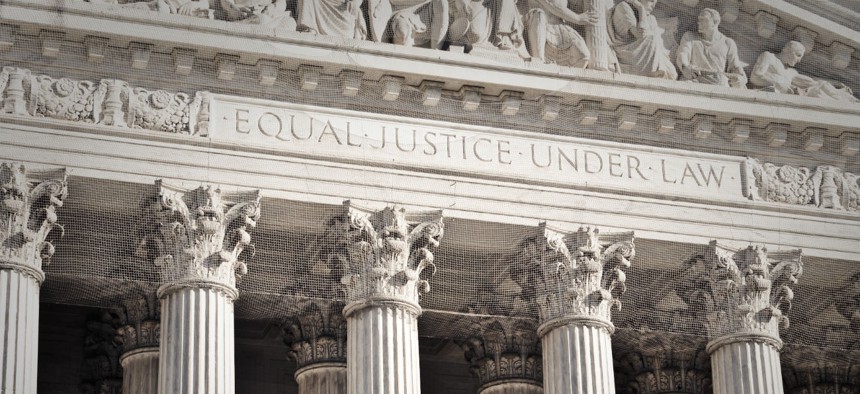
By Brandon Bourdages / Shutterstock.com
Supreme Court to Examine Burden of Proof for Age Discrimination Lawsuits at Federal Agencies
If the high court finds in favor of a Veterans Affairs pharmacist, older federal employees could have an easier time making the case for discrimination.
In the coming months, the Supreme Court could make it easier for federal employees to prove that they were discriminated against on the basis of age in federal Age Discrimination in Employment Act cases.
Earlier this year, the Supreme Court agreed to hear arguments in Babb v. Wilkie, in order to determine whether to maintain the so-called “but-for cause” standard in age discrimination lawsuits. In federal Age Discrimination in Employment Act and Title VII cases, some federal courts use the same standard for both federal agencies and private sector organizations: that age discrimination must be the proximate cause of an adverse personnel action against the plaintiff.
In the lawsuit, Noris Babb, a Veterans Affairs Department pharmacist, alleged that the department discriminated against her based on her age and gender, and retaliated against her after she filed an Equal Employment Opportunity Commission complaint. Lower courts consistently ruled against her, finding that the age discrimination did not meet the “but-for cause” standard.
The Age Discrimination in Employment Act sets differing standards for proving age discrimination: in the private sector, the discrimination must be the proximate cause of the adverse action, but language addressing federal agencies prohibits “any discrimination” based on an employee’s age.
Although the EEOC and the Merit Systems Protections Board both have rejected the stricter standard for determining whether federal agencies discriminated against an employee, there is a mix of standards among the federal courts. The D.C. circuit likewise has rejected the “but-for cause” standard, but the Eleventh Circuit, which had jurisdiction in this case, continues to use it with private organizations and federal agencies alike.
In a brief to the Supreme Court, the Trump administration argued that despite the “any discrimination” language in the portion of the law governing federal agencies, the stricter standard of proof should still apply.
“The ADEA’s federal-sector provision provides that ‘all personnel actions’ affecting employees or applicants for employment in executive agencies who are at least 40 years of age ‘shall be made free from any discrimination based on age,’” the government wrote. “Both federal-sector provisions thus use the same phrase—‘based on’—that the court said . . . ‘indicates a but-for causal relationship.’”
Babb, by contrast, based her argument in part on a different phrase in the law.
“The federal sector provisions of the ADEA and Title VII instruct that ‘all personnel actions’ affecting federal employees ‘shall be made free from any discrimination based on’ the listed protected characteristics,” her attorneys wrote. “The ‘shall be free from’ language—which the government essentially ignores throughout its brief—is not present in the private sector provisions.”
Last month, the National Treasury Employees Union filed an amicus brief on behalf of Babb, arguing that the plain language of the statute “squarely answers the question presented.” A ruling in favor of the Trump administration would lead to a rash of age-based discrimination across the federal government, the union said.
“Adoption of a but-for standard for proving age discrimination under [the law’s federal sector provisions] would almost certainly lead to discrimination going unremedied,” NTEU stated. “As [U.S. Circuit] Judge [David] Tatel has explained, if a ‘but-for causation’ standard is used, ‘a plaintiff who fails to demonstrate that age was not a determining factor but nonetheless shows that it was one of several factors would lose even though the challenged personnel action in that scenario was not “free from any discrimination.” ’ ”
Oral arguments for the case have not yet been scheduled.







